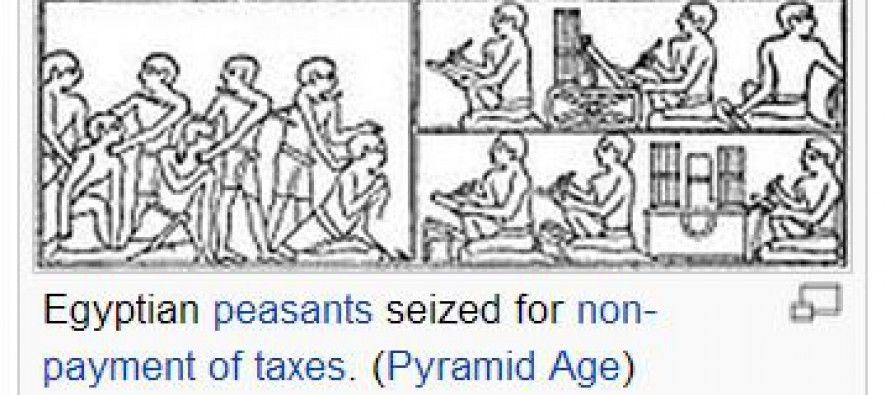Local governments approve numerous tax increases: Part 2

 This is Part 2 of a series of stories about tax increases passed throughout California in the November 5 elections. To read Part 1, click here.
This is Part 2 of a series of stories about tax increases passed throughout California in the November 5 elections. To read Part 1, click here.
Last month, over two dozen tax increases passed in local municipalities throughout California. Voters approved measures to create or extend a variety of taxes, often with large majorities. The numerous tax increases will have secondary effects—both political and economic—beyond the direct effect of filling local coffers with more revenue.
Economic Effects
The economic effect of tax increases primarily depends on the size and type of tax, along with the economic climate that the tax is enacted in. Although voters also considered more niche taxes, the most common revenue generators on the ballot were parcel taxes and sales taxes.
A parcel tax, colloquially known as the cousin of the property tax, is typically levied on a per parcel basis (some are calculated per square foot). Most of the parcel taxes passed last month are relatively modest—typically below $200 annually. However, that does not spare them from having an economic effect on those Californians that will soon begin paying the new tax. According to a policy brief from the California Taxpayer’s Association, the “very nature of the parcel tax is regressive” because it is represents a higher burden for poor residents.
“While fixed rates are regressive,” the paper noted, “adopting a progressive parcel tax that is based on a taxpayer’s ability to pay is currently not legal.”
While parcel taxes may fund critical local functions—such as public education and firefighting programs—they do so in a way that inevitably hurts families with less disposable income. Despite this, the majority of parcel taxes are passed. Proponents of the parcel taxes argue that the tax functions as an investment in public safety and education, which pays off later. They also contend that many new parcel taxes contain provisions that ensure the funds remain in the local community, even if it offers a somewhat regressive structure.
Sales tax increases were also successful at the ballot; only one of the proposed increases failed to pass. Most of the tax increases were sold as direct benefits to public safety and other public programs. And since they were all less than a 1 cent increase, it was significantly easier to sell them to the public. (Adding half a percentage point to a statewide base level of 7.5 percent makes the increase seem less dramatic.)
However, a small sales tax increase can still lead to significant adverse effects. A study conducted by the Beacon Hill Institute for Public Policy Research examined the effect of a proposed half-cent sales tax increase in Ohio in the 1990s.
The report concluded that “an increase in the state sales tax rate from 5% to 5.5% would result in the loss of at least 49,000 jobs and would leave Ohio’s stock of capital at least $4.4 billion smaller.”
Proponents of sales tax increases make similar arguments to those that support parcel taxes: Although the tax may reduce disposable income or eliminate jobs, it functions as a solid long-term investment.
Although the entire California state sales tax didn’t go up last month, the municipalities may reasonably expect some of the same effects, just on a smaller scale. Businesses operating with slim profit margins in the tough economic times may be driven out of cities that eat away at profits—taking jobs with them.
Electoral Effects
Political prognosticators often use off-year election results as predictors for elections the following year. Big Republican wins in Virginia and New Jersey in 2009, for example, indicated growing backlash to overreach by the Obama administration (culminating in the Republicans retaking the House in 2010).
Next year, California Gov. Jerry Brown is expected to run for reelection, and voters will be faced with a series of ballot propositions. One possible initiative would raise $3 billion in revenue for road repairs by more than doubling the current vehicle registration fee over the next four years. Other possible tax increases have been making headlines too.
Do the results from the local elections last month provide insight into California’s upcoming statewide election? For instance, does the fact that voters are willing to pass sales and parcel taxes to pay for public programs indicate that they will be willing to increase other forms of taxes and fees next year? It’s hard to say, according to a long-time California political expert.
Sherry Bebitch Jeffe, a senior fellow at the University of Southern California School of Policy, Planning and Development, told CalWatchdog that the success of tax increases in municipal elections didn’t necessarily portend success for statewide initiatives.
She said that in local elections “voters more easily perceive that there is a direct attachment between the tax and their welfare. It’s not quite so with regard to state taxes.”
She added that it was far too soon to predict whether or not tax initiatives on the 2014 ballot would be successful.
“Whether or not a tax increase can succeed depends on voters’ perceptions of the economy—whether or not the economy is to perking along or doing badly. That I don’t think we know yet, do we?”
Related Articles
Newsom reluctant to debate Nehring
Lt. Gov. Gavin Newsom is crusing to re-election victory on Gov. Jerry Brown’s coattails and the general strength of the
California Democrats spend significant campaign cash fighting each other because of Prop. 14
New figures on the November 2016 election cycle showed that Golden State Democrats continued to shell out substantial sums to compete
Brown’s Budget Blockbuster
MARCH 22, 2011 By WAYNE LUSVARDI (Satire) Gov. Jerry Brown may have learned in Jesuit school how to put the




